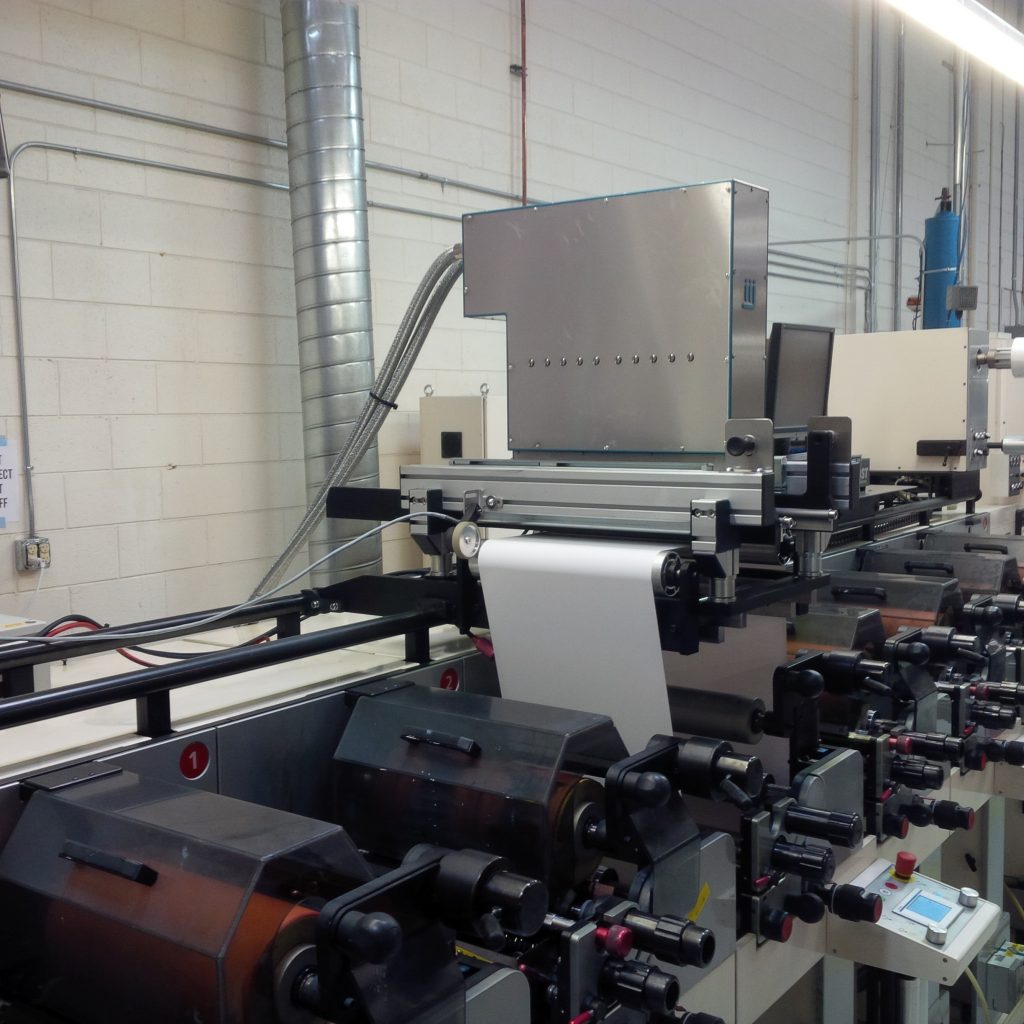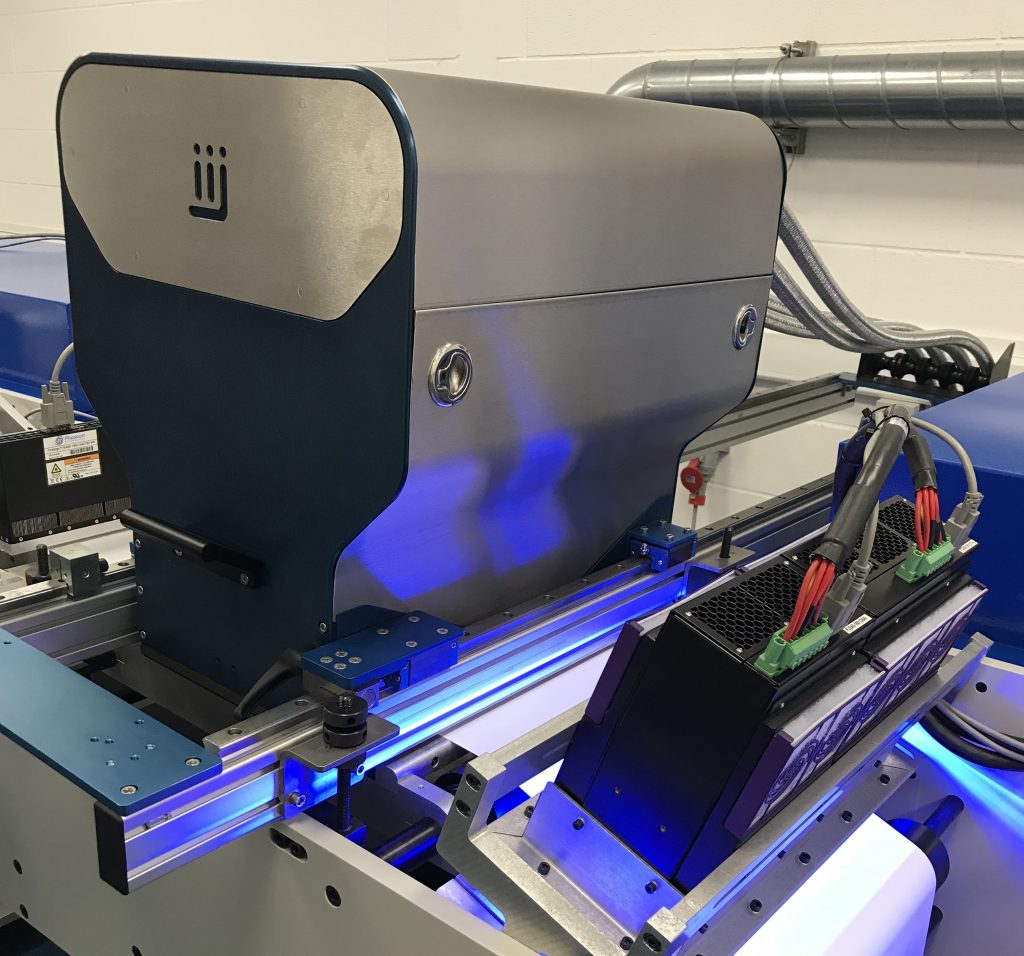For those looking for short
run label solutions, digital technologies have always been attractive. Both
toner and inkjet solutions have long heralded a digital revolution, but whilst
it is now common place it can never replace analogue technologies, only enhance
and improve it. That’s why at IIJ we like to refer to a digital evolution
instead.
Hybrid technologies are now in
vogue, but are they really the ideal solution and the answer to all the
applications? As with everything it depends on your circumstances.
There are several things to
consider. Firstly, the kind of work that is needed. If you are simply producing
coloured labels with minimum finishing requirements, such as die cutting and
lamination, then maybe an offline or nearline digital solution works. Although
you still may not benefit from reduced stock levels as the digital rolls need
to be stored prior to finishing. If you are producing complex labels that need
additional processes such as low cost flexo background and spot colours,
foiling, varnishing, embossing etc then an on press inline solution is the
perfect way. Putting one of our ColourPrint HiQ modules onto an existing flexo
press gives the user the power to include variable high resolution colour
images and text on multi process labels.
Secondly material workflow and
space requirements are important. For a small label company, adding another
piece of standalone hardware for near line production can be problematic and
lead to additional costs of ownership. There is the extra space, services,
staff, and storage of WIP etc. This is where hybrid solutions score big.
Especially solutions that do not require extensive surgery on the press or
require the press to be extended. Thanks to the use of Konica Minolta’s
extremely compact high resolution KM1800i printheads, IIJ’s in-line inkjet
modules are some of the most compact on the market. This allows high quality
digital label capabilities to be added to an existing press, without the need
to remove multiple flexo stations, and also makes it easier for them to be
added to older equipment than a system with a longer print station. The compact
footprint added to the use of high efficiency LED curing allows the system to
be used exactly when and where it’s needed, especially when used on a rail
mounted press adaptor.

The third consideration is the
label material itself. Many inkjet label systems need specific label stocks
that are firstly more expensive than flexo stocks, but also do not always lend
themselves to some of the additional processes. With an on press solution, low
cost primers can be added in line, so standard stocks can be utilised, saving
money and reducing stock inventory.
Finally, production speeds.
The press speed is governed by the slowest process, and for a long time inkjet
solutions have been offered at between 25 to 50 m/minute. This then gives an
issue for in line production as it reduces production speed, undermining the
value add of the digital solution. In this scenario, off line or near line
solutions look more attractive. But what if the inkjet solution is run at 80 to
100 m/min or even 200m/min for monochrome variable data? Then the on press
inkjet solution is no longer the limiting point. IIJ label modules typically
operate at 80 to 100m per minute, and for text and variable data, speeds from
100 to 200m per minute, so they can hit this requirement, and then the world of
hybrid labels is much wider.
So are they truly the best of
both worlds, well at IIJ we have been supplying hybrid technologies since 2010
and we believe that actually by evolving the analogue label production process
through innovative use of inkjet, the result is much more powerful that the
separate processes alone. We pride ourselves on delivering reliable solutions,
tailored to our customers exacting requirements. Short run colour self-adhesive
labels can be perfectly produced using IIJ’s high resolution ColourPrint HiQ
engines suitable for premium labels used in the food and beverage sector,
personal care such as shampoo and cosmetics, nutraceutical labelling, and
labels for consumer goods. For industrial labels, coding and marking labels,
including security labels, the MonoPrint series really hits the spot.

Clothing swing tags and RFID
labels are also easily produced by combining our outstanding variable data
capabilities with our latest colour management capabilities, giving accurate
spot colour identifiers required in this market. If migration and set off
concerns exist for an application, IIJ also has a range of solutions using Low
Migration inks, so pretty much whatever you are looking for in an inkjet
labelling solution, IIJ can deliver. Not just for labels; The same concept
works for flexible packaging, blister foil, commercial print and even
corrugated board!
This year LabelExpo Europe will be more digital
than ever as the market demands ever shorter runs and variable content. IIJ
will be there, in Hall 6, Stand 6D11, to answer your real production needs. We
have been at this a long time, and our equipment is always improving and
evolving, so even if you think you know our offering, think again, we believe
you’ll be pleasantly surprised.